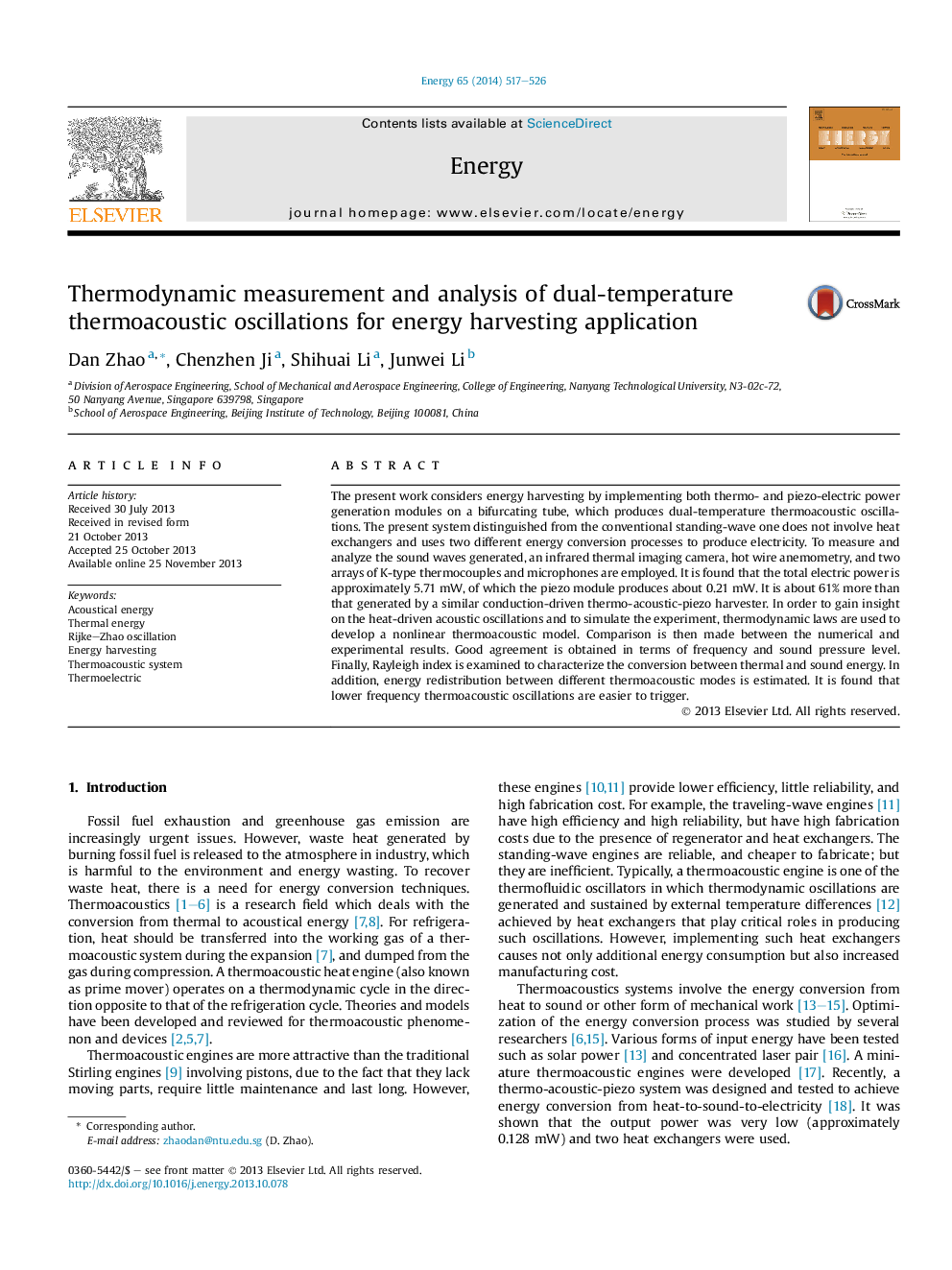| کد مقاله | کد نشریه | سال انتشار | مقاله انگلیسی | نسخه تمام متن |
|---|---|---|---|---|
| 1732707 | 1521481 | 2014 | 10 صفحه PDF | دانلود رایگان |
• Energy harvesting from thermo- and piezo-electric diaphragms is obtained.
• Total electrical power is approximately 5.71 mW.
• Thermodynamic analysis of heat-driven oscillations is performed.
• Rayleigh index characterizing heat-to-sound conversion is estimated.
• Energy redistribution between various eigenmodes is calculated.
The present work considers energy harvesting by implementing both thermo- and piezo-electric power generation modules on a bifurcating tube, which produces dual-temperature thermoacoustic oscillations. The present system distinguished from the conventional standing-wave one does not involve heat exchangers and uses two different energy conversion processes to produce electricity. To measure and analyze the sound waves generated, an infrared thermal imaging camera, hot wire anemometry, and two arrays of K-type thermocouples and microphones are employed. It is found that the total electric power is approximately 5.71 mW, of which the piezo module produces about 0.21 mW. It is about 61% more than that generated by a similar conduction-driven thermo-acoustic-piezo harvester. In order to gain insight on the heat-driven acoustic oscillations and to simulate the experiment, thermodynamic laws are used to develop a nonlinear thermoacoustic model. Comparison is then made between the numerical and experimental results. Good agreement is obtained in terms of frequency and sound pressure level. Finally, Rayleigh index is examined to characterize the conversion between thermal and sound energy. In addition, energy redistribution between different thermoacoustic modes is estimated. It is found that lower frequency thermoacoustic oscillations are easier to trigger.
Journal: Energy - Volume 65, 1 February 2014, Pages 517–526
